Text
Parkinson’s Disease Treatment in Dwarka, Delhi | Top Neurosurgeon
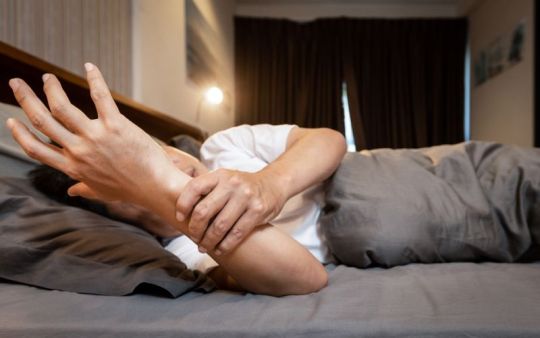
Parkinson’s disease is a complex neurodegenerative disease that affects various individuals worldwide. It is identified by motor and non-motor symptoms and poses a challenge for doctors, caregivers and patients. As we all know the brain controls our movements, thoughts, and emotions. However, these activities are interrupted by the strike of Parkinson’s Disease due to which everyday tasks can become challenging.
This guide on Parkinson’s disease aims to educate users on its meaning, symptoms, diagnosis, and more. Top neurosurgeons in Dwarka, Delhi will help patients regain control and live a fulfilling life.
What is Parkinson’s Disease?
Parkinson’s disease (PD) is a brain condition that causes progressive damage to parts of the brain, resulting in problems with movement, mental health, sleep, pain, and other health issues. PD is the fastest-growing neurological condition in the world.
Four key symptoms of Parkinson’s disease:
Tremors: Shaking or quivering movements that happen without one’s control, usually starting in the hand or arm and are more likely to occur when the limb is relaxed.
Slowness of movement: Also known as bradykinesia, this is when physical movements are much slower than normal, which can make everyday tasks difficult.
Muscle stiffness: Also known as rigidity, this is when muscle remains contracted for a long time, which can make it difficult to move around and make facial expressions.
Impaired balance and coordination: This can sometimes lead to falls.
Causes and risk factors
Genetics: About 10–20% of Parkinson’s disease cases are linked to genetics, and certain gene variations can increase the risk. However, these changes are uncommon except in rare cases with many family members affected.
Environmental factors: Exposure to toxins, such as farming chemicals, heavy metals, detergents, solvents, insecticides, organochlorines, and herbicides, may trigger Parkinson’s disease.
Age: The risk of developing Parkinson’s disease naturally increases with age, and the average age at which it starts is 60 years old.
Risk factors associated with Parkinson’s disease
Genetics: Individuals with a parent or sibling who is affected have approximately two times the chance of developing Parkinson’s. Read more
#Parkinson’s Disease Treatment#Spine specialist in Dwarka#neurosurgeon in delhi#healthyliving#neurosurgeon near me
0 notes
Text
Scoliosis treatment without surgery using exercise | Neurosurgeon in Delhi
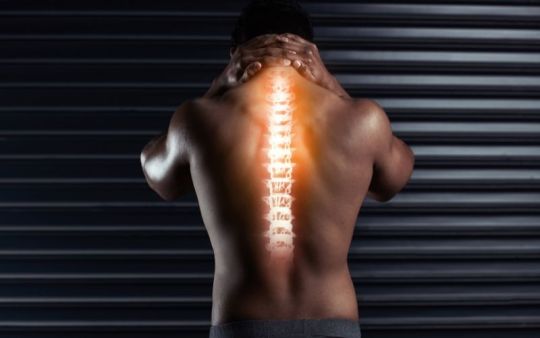
Scoliosis can cause trouble if not treated correctly. Many doctors and top neurosurgeon have suggested exercises to help patients deal with pain and correct the spine posture during daily activities. Scoliosis exercises should be done cautiously and with good technique. The objective is to establish spine symmetry to restore trunk alignment and relieve back discomfort.
This guide curated by the Dr. Nagesh Chandra, Neurosurgery Specialist in Dwarka, Delhi, explains the meaning of scoliosis, exercises, etc. You must consult your doctors before performing any exercise to ensure it is safe for your condition. Follow all the instructions from your doctor and take a path towards fitness.
What is Scoliosis and its diagnosis in Delhi?
Scoliosis is a sideways spine curve that can look like an “S” or “C” shape. It can cause the body to tilt to the side, and some people may have one shoulder higher than the other. Scoliosis is usually mild and does not cause symptoms but can lead to back pain. Most cases of scoliosis are mild, but some curves worsen. Scoliosis is more likely to get worse while bones are still growing.
Scoliosis occurs in about 3% of people and most commonly develops between the ages of ten and twenty. Females typically are more severely affected than males, with a ratio of 4:1.
Scoliosis and Kyphosis however looks similar but are two different spine conditions.
Scoliosis treatment without surgery using exercises
These are some of the exercises for scoliosis that must be performed under an Spine doctor supervision.
Cat-camel
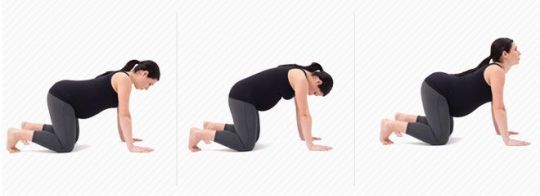
The cat-camel stretch is a freehand exercise that can help improve the flexibility and mobility of the spine. It can also help prevent spinal disorders and reduce pain.
How to perform it: You must lie down and stand on your hands and legs. Ensure your back is on level and your head & neck are comfortable. Arch your back and inhale deeply while drawing your abdominal muscles up & down. Now, exhale, relieve your abdominal muscles, and drop your neck. Lay flat on your belly and lift your towards, facing towards the ceiling.
Latissimus dorsi stretch
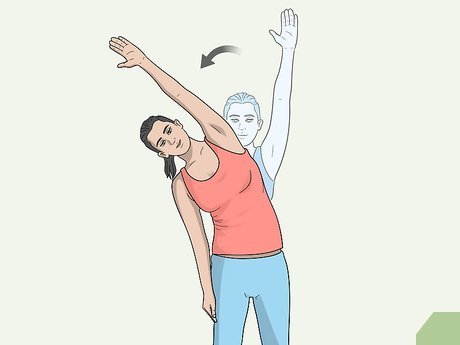
How to perform it: Stand and keep your back straight. Keep your legs apart and slightly bend your knees. Raise your hands and hold the right wrist with your left hand. Bend towards the right side until you feel a stretch in your body. Hold your breath for 10-15 seconds, and release your breath and hands. Repeat the same process on the left side.
Abdominal press
The abdominal press is a static exercise that can help with scoliosis by strengthening the core and abdominal muscles. Read more
#Scoliosis treatment#Spine specialist in Dwarka#Neurosurgeon in Delhi#Neurological Expertise#best neurosurgeon in delhi
0 notes
Text
Discussing Complications of Scoliosis | Spine specialist in Dwarka, Delhi

A diagnosis of scoliosis, or an abnormal curvature of the spine, can lead to many questions about appropriate scoliosis treatment in Delhi. Most often, it is diagnosed in childhood and adolescence, which is best time to prevent any possible complications before reaching adulthood. If not treated on time, scoliosis causes serious problems. Timely intervention through braces or surgery can prevent or reduce the consequences. Fortunately, the majority of people with scoliosis seek immediate medical care. It minimises the symptoms and reduces complications related to ageing. Dr. Nagesh Chandra, a spine specialist in Dwarka, Delhi, explains the complications of scoliosis
Causes of Scoliosis Complications
Several things may be responsible for the development of scoliosis complications in adults. Knowing these elements helps to take measures and avoid more problems.
Undiagnosed Scoliosis: Some people have scoliosis without even being aware of it. Without a diagnosis, they lose out on the chance to be treated, It could greatly improve their quality of life.
Neglecting Mild Scoliosis: Mild scoliosis is barely noticeable. There are no present symptoms. This indifference may cause further issues when the spine degrades with time.
Surgical Complications: Surgery especially spinal fusion can have long-term side effects. They can be low mobility and chronic pain.
How Scoliosis is Affected by Aging?
The ageing process worsens general health status and the connective tissue’s integrity. As adults age, body changes increase the curvature of the back spine when scoliosis is present. The degree of severity of your curve alongside your overall health will determine when complications finally set in.
Loss of Connective Tissue Elasticity: As tissue becomes less elastic with age, this results in stiffness and more injury risks.
Joint Wear and Tear: Scoliosis can bring accelerated arthritis characterized by pain and stiffness in a joint.
Loss of Water Retention: As long as one ages, their spine disc height will disappear gradually, which in turn could lead to spinal stenosis.
Spinal Stenosis: Scoliosis increases spinal stenosis, as spaces around the spinal cord and nerves become tinier.
Complications Occurring with Untreated or Poorly Managed Scoliosis
Untreated spinal curves can lead to severe complications. There are two main objectives of scoliosis treatment, the first being to stop the worsening of the curvature of the spine. The absence of thorough care and constant checkups may result in the progress of the disorder. Severe scoliosis can lead to some extent to produce the following problems. Read more
#Spine specialist in Dwarka#neurosurgeon in delhi#best neurosurgeon in delhi#neurosurgeon near me#top neurosurgeon#Scoliosis
0 notes
Text
Know difference between Neurologist and Neurosurgeon in Delhi
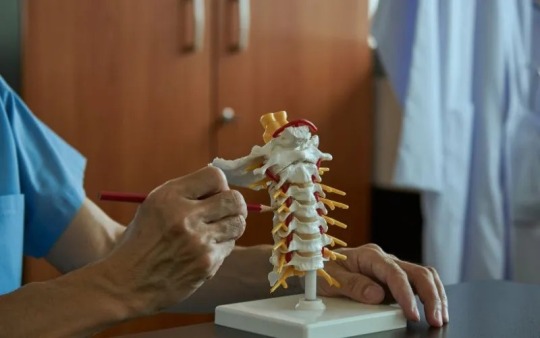
It’s essential for you to know the difference between a neurologist and a neurosurgeon when dealing with medical disorders involving the central nervous system. They both deal with problems that affect the brain and spinal cord which perform most functions of the body. However, their roles differ: a neurologist diagnoses and treats neurological diseases using medicines without surgery and operations while a neurosurgeon in Delhi carries out the surgery to deal with brain and spinal cord disorders.
What is a Neurologist?
Neurologists treat brain and nervous system conditions. They diagnose and treat them using non-invasive approaches. They are the first expert someone visits if they are facing brain or spinal cord issues. Neurologists can treat several conditions, including
Neurological disorders: epilepsy, multiple sclerosis, Parkinson’s disease, Alzheimer’s disease, and forms of dementia.
Neuromuscular disorders: Muscular dystrophy, myasthenia gravis, peripheral neuropathy and other diseases.
Headaches and migraines: Management of terminal and chronic stages.
Stroke: Eliminating both ischemic (clot-promoting) and hemorrhagic (bleeding-causing) kinds.
Movement disorders: Tremor, dystonia and restless leg syndrome.
Seizure disorders: These include epilepsy and several other types of seizures.
Neurodevelopment disorders: These include autism and Attention-Deficit — Hyperactivity Disorder (ADHD).
Neurological injuries: These refer to traumatic brain injury or spinal cord injury.
Neurologists use a variety of diagnostic tests and methods. Some of these diagnostic tests are MRI, CT scans, EEGs, EMGs, regular neurological exams, and nerve conduction studies. They work with other physicians and specialists to ensure the best care for neurological condition. Read more
0 notes
Text
#neurosurgery#best neurosurgeon doctor in delhi#best neurosurgeon in delhi#Parkinson’s Disease Treatment#Top Neurosurgeon
0 notes
Text
#best neurosurgeon doctor in delhi#neurosurgeon near me#best neurosurgeon in delhi#best spine doctor in delhi#neurosurgeon in Delhi
0 notes
Text
#scoliosis treatment in Delhi#Scoliosis#spine specialist in Dwarka#Spine specialist in Dwarka#Neurological Expertise
0 notes